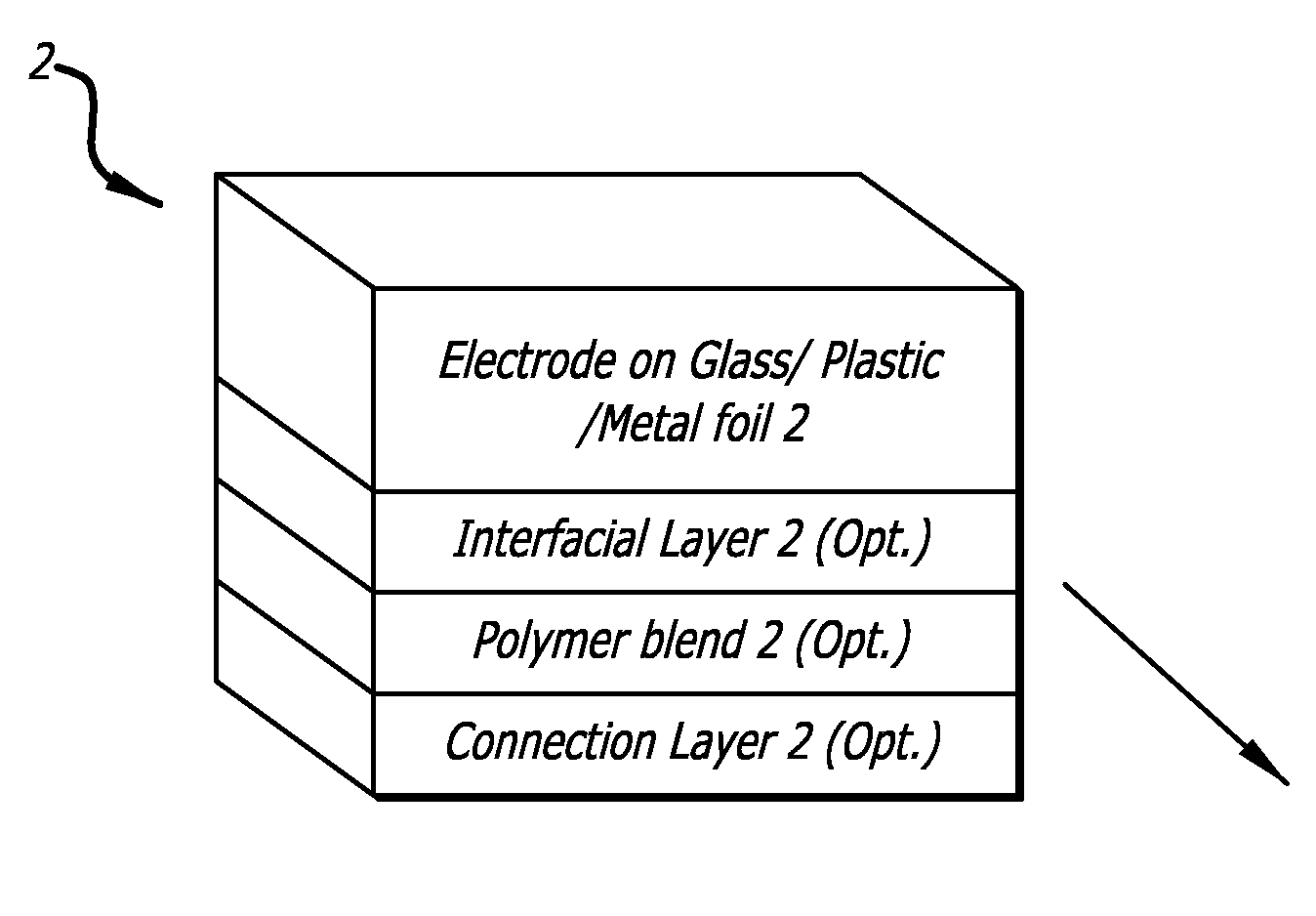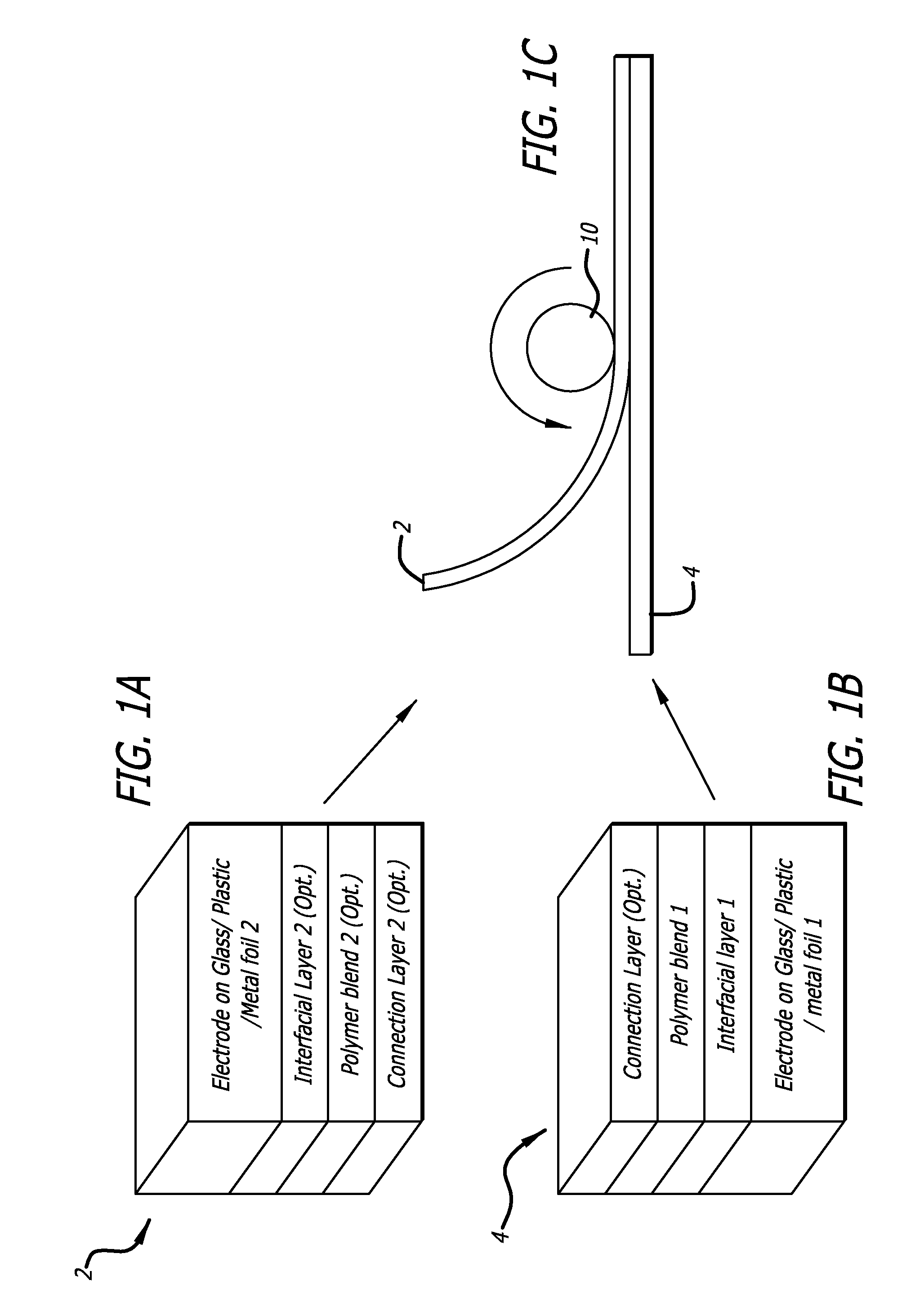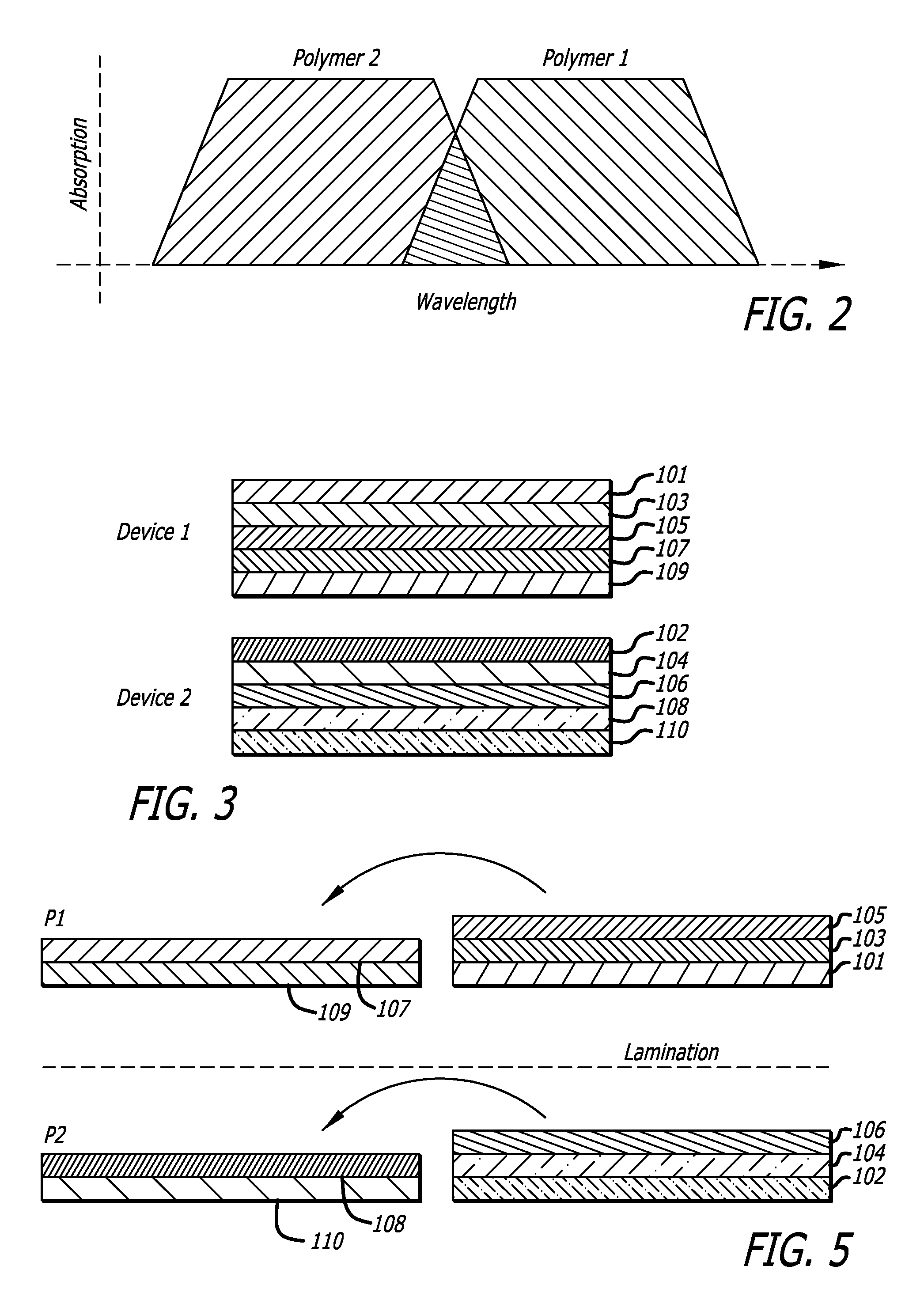Tandem solar cell
a solar cell and tandem technology, applied in the field of solar cells, can solve the problems of low efficiency of polymer solar cells compared with other solar cells, inefficient solar irradiation absorption, etc., and achieve the effect of high throughpu
- Summary
- Abstract
- Description
- Claims
- Application Information
AI Technical Summary
Benefits of technology
Problems solved by technology
Method used
Image
Examples
Embodiment Construction
[0022]Two methods to achieve a tandem solar cell are disclosed. The first method involves stacking two or more complete polymer solar cells (each having a polymer blend active layer) together. The individual solar cells can be connected either in series or in parallel. In the second method, two individual polymer solar cells are first constructed and then laminated together to form a tandem structure. The lamination can be metal-free, thus resulting in translucent polymer solar cell. Techniques of the two methods can also be combined.
[0023]In the present disclosure, “thermal annealing” refers to a process in which the substrates, which have various layers deposited on top, are provided thermal energy (heat) by placing the substrates on a hot plate, which is maintained at a certain temperature for a certain period of time. The temperature is referred to as the annealing temperature and the time as annealing time. The thermal annealing may also be done by providing the thermal energy ...
PUM
| Property | Measurement | Unit |
|---|---|---|
| Flexibility | aaaaa | aaaaa |
| Electrical conductor | aaaaa | aaaaa |
| Translucency | aaaaa | aaaaa |
Abstract
Description
Claims
Application Information
 Login to View More
Login to View More - R&D
- Intellectual Property
- Life Sciences
- Materials
- Tech Scout
- Unparalleled Data Quality
- Higher Quality Content
- 60% Fewer Hallucinations
Browse by: Latest US Patents, China's latest patents, Technical Efficacy Thesaurus, Application Domain, Technology Topic, Popular Technical Reports.
© 2025 PatSnap. All rights reserved.Legal|Privacy policy|Modern Slavery Act Transparency Statement|Sitemap|About US| Contact US: help@patsnap.com



